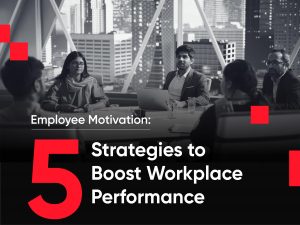Reading Time: 3 minutes
Companies often prioritize financial performance, marketing strategies, and product development in pursuing business success. However, one essential aspect frequently overlooked is the physical workplace environment. The place where employees spend a significant portion of their waking hours can profoundly impact their well-being, productivity, and overall job satisfaction. In this blog post, we delve into the importance of assessing employee satisfaction in the physical workplace environment and explore innovative approaches to enhance employees’ experiences.
The Impact of the Physical Workplace Environment
We’ve all experienced our surroundings’ subtle yet significant influence on our mood and productivity. Research has consistently shown that the physical workplace environment is vital to employee satisfaction and performance. A poorly designed office with uncomfortable furniture, insufficient lighting, and inadequate ventilation can lead to decreased productivity, increased stress, and even higher employee turnover rates.
On the other hand, a thoughtfully designed and inspiring workspace can boost creativity, collaboration, and overall employee morale. By prioritizing the physical workplace environment, companies can create a positive work culture that fosters employee engagement and loyalty.
Going Beyond Traditional Approaches
Traditional employee satisfaction surveys can be helpful but may only partially capture the nuances of the physical workplace environment. To gain deeper insights, organizations should embrace modern approaches to assessing employee satisfaction:
1. Real-time Feedback Apps
Mobile applications that allow employees to provide instant feedback on various aspects of the workplace are gaining popularity. Whether it’s rating the temperature, noise levels, or the comfort of their chairs, real-time feedback apps enable companies to identify pain points quickly and address them promptly.
2. Workplace Experience Platforms
Emerging technologies offer Workplace Experience Platforms that continuously use data analytics to assess the workplace environment. It collects and analyzes data on employee preferences, behavior, and interactions with the workspace, and these platforms help organizations make data-driven decisions to enhance employee satisfaction.
Identifying Pain Points
To improve the physical workplace environment, it’s crucial to identify the pain points employees face daily. Conducting focus groups or individual interviews can provide valuable insights into specific issues that need addressing. Common pain points may include noise distractions, inadequate break areas, lack of privacy, or uncomfortable furniture.
Designing an Employee-Centric Workspace
Creating an employee-centric workspace is the cornerstone of boosting employee satisfaction. Here are some strategies to consider:
1. Flexible Workstations
Allow employees to personalize their workstations to suit their preferences and needs. Offer adjustable desks and chairs to promote ergonomic comfort.
2. Biophilic Design
Integrate elements of nature into the workspace, such as plants, natural light, and natural materials. Biophilic design has been shown to reduce stress and enhance creativity.
3. Inclusive Spaces
Design spaces that cater to different work styles and preferences. Offer quiet zones for focused work, collaborative spaces for group projects, and comfortable break areas for relaxation.
Measuring the Impact of Changes
When implementing changes in the workplace, it’s essential to measure their impact on employee satisfaction. Set measurable goals and track key performance indicators (KPIs) before and after making modifications to assess their effectiveness. This data-driven approach will help companies fine-tune their strategies and continuously improve the workplace environment.
Psychological and Emotional Factors
While physical attributes are essential, the psychological and emotional aspects of the workplace environment also play a significant role in employee satisfaction. A supportive company culture, strong leadership, and a healthy work-life balance create a positive work environment that fosters employee happiness and job satisfaction.
Leveraging Technology for Continuous Improvement
As technology advances, companies can leverage AI-powered systems to monitor employee preferences and adapt the workplace environment accordingly. This approach creates a dynamic, personalized workspace that enhances employee experiences and productivity.
Assessing and improving employee satisfaction in the physical workplace environment should be a priority for any forward-thinking organization. Going beyond the basics and adopting innovative approaches will create a happier and more productive workforce and give businesses a competitive edge in attracting and retaining top talent.
By recognizing the significance of the physical workplace environment and actively working to enhance it, companies demonstrate their commitment to employee well-being and professional growth. A thriving workplace environment fosters a positive company culture and sets the stage for long-term success and prosperity. So, let’s embrace this essential aspect of business management and build a brighter future for both employees and organizations.
To learn more about workplace culture, visit us here.











